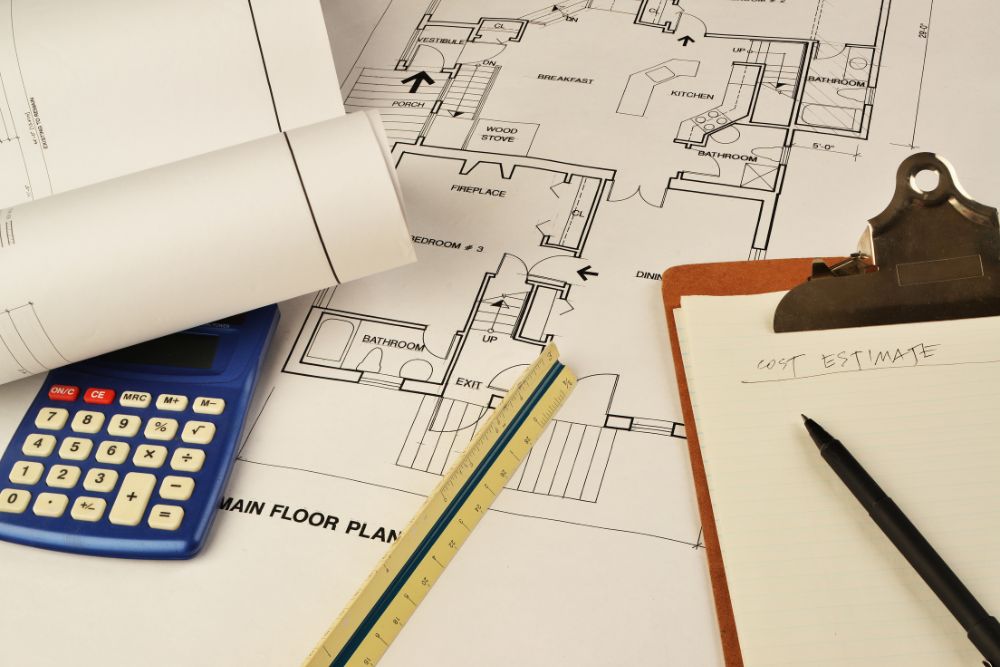Any project begins with a vision. However, to make the vision a reality, planning becomes very important, particularly in terms of costs. Whether it’s the construction of a new plant, the creation of new software, or the launch of a product, knowing the cost to be spent initially is what keeps a project within the time frame.
Studies indicate that approximately 75 percent of construction projects in North America are overbudgeted, and projects worldwide are overbudgeted by an average of 27 percent. These figures point out one basic fact: cost estimation is not a mere planning process; it is the foundation of successful project management.
An accurate and clear estimate allows project managers to spend resources efficiently, lessens the chances of experiencing overspending, and creates trust in the client and stakeholders. Lack of it would lead to delays of projects, strained finances, and even failure in certain instances.
In this blog, we will discuss the key cost estimation methods in project management, their importance, and how you can use them to make reliable cost estimations.
What Is Cost Estimation in Project Management?
Project management Cost estimation is the procedure of estimating the amount of money required to complete a project. It encompasses labor, materials, equipment, overhead, and even cushioning for unforeseen risks.
Consider it a financial roadmap. A project can never operate well without an estimate of a clear cost, just as one cannot build a building without detailed drawings. It establishes the baseline of the budget, the timeline, and the quality of the end product.
A good cost estimate usually covers:
- Labor costs – wages, benefits, and subcontractors
- Materials and equipment – everything from raw materials to machinery
- Overhead expenses – utilities, rent, administration, and insurance
- Contingencies – extra funds to handle risks and changes
The Project Management Institute (PMI) points out that accurate cost estimation is one of the core elements of successful project management. Without it, organizations risk overspending, losing client trust, or even abandoning the project altogether.
Importance of Cost Estimation in Project Management
Cost estimation is one of the most important steps in project management. It’s not just about putting numbers together; it’s about giving the project a solid direction from day one.
Here’s why it matters so much:
- Maintains the Budget On Track: An exact estimate will assist in making plans to use the money even before the work commences. In its absence, projects may run out of funds or overspend.
- Helps Use Resources Wisely: Cost estimates are used to allocate labor, materials, and equipment. This will prevent wastage and ensure that the project flows smoothly.
- Supports Better Decisions: Once clients and stakeholders are aware of the anticipated costs, they can determine whether the project is realistic. Research indicates that approximately 1 out of 7 projects fail due to poor cost estimates, and this indicates how important this step is.
- Prepares for Risks: Prices fluctuate, designs are modified, and delays occur. A small amount of extra (termed contingency) to the estimate will allow space to deal with the unforeseen.
- Develops Trust: With an elaborate estimate, clients are assured that the project has been well thought out. This brings confidence and minimizes conflicts in the future.
- Tracks Progress: An estimate is a baseline. Comparison of actual costs with estimated ones helps managers to identify problems at their early stages and rectify the problem before it is too late.
5 Common Cost Estimation Methods in Project Management
The cost of a project can be determined in various ways. The correct option will be determined by the nature of the project, the amount of information you have, and the amount of detail you require. The following are five of the most common methods of cost estimation and their areas of best application.
1. Analogous Estimating
This is a top-down method where you look at the costs of past, similar projects to estimate the cost of a new one.
For example, if you want to budget for a marketing campaign for a new Netflix film, you could look at what a similar campaign cost in the past. Then, you’d adjust for inflation, changes in resources, or new tools.
Best for: Projects in the early planning stage with limited details but reliable past records to compare against.
2. Bottom-Up Estimating
Under this approach, you compute the cost of each activity or task individually and sum up all to obtain the complete project cost. It typically entails the development of a Work Breakdown Structure (WBS) which includes all the tasks and its costs together with a certain amount of overhead and unforeseen cost.
Best for: Projects that have a defined scope and an elaborated list of tasks.
3. Parametric Estimating
Parametric estimating involves the use of certain data or measurements to determine the costs. It is the use of cost-per-unit information on your project.
For example, an ad agency may be aware that accessing a specific group of people on one platform costs approximately $4,000. When the client requires multiple ad variations, they may estimate a total cost of about $10,000 using the previous data.
Best for: Projects with good historical data and sound cost measures.
4. Three-Point Estimating
This method accounts for uncertainty by considering three different scenarios:
- Optimistic (best case)
- Most likely (realistic case)
- Pessimistic (worst case)
For example, if building a website could cost $8,000 in the best case, $10,000 in the most likely case, and $14,500 in the worst case, you average these numbers:
$8,000 + $10,000 + $14,500 = $32,500
$32,500 ÷ 3 = $10,833
So, the estimate would be about $10,833.
Best for: Projects with many risks or where costs may vary widely.
5. Ballpark Estimating
A ballpark estimate gives a rough cost range when only limited information is available. It combines past project costs with early assumptions about the new project.
As an example, say your team would typically charge about $10,000 to make a website, then the ballpark would be $7,500 to $15,000 (approximately -25% to +50%).
Best when: The project is at its initial stages and its specifics are not yet clear.
How to Create Accurate Cost Estimates
The key to being on track with a project is proper cost estimates. Without them, projects are likely to spend more money than necessary, miss deadlines, or even get into unforeseen issues. The following are just a few tips on how to do it:
1. Know the Project Scope
List all of the tasks, deliverables, and requirements. The more information you possess, the more precise your estimation is going to be.
2. Look at Past Projects
Compare your previous similar projects. Their expenses and schedules provide a good starting point for your estimate.
3. Pick the Right Method
Select the appropriate approach that suits your project:
- Analogous or ballpark estimates – good for the early stages.
- Bottom-up or parametric estimates – better when details are clear.
- Three-point estimates – helpful when costs are uncertain.
4. Break the Project into Tasks
Break the project down into small tasks and estimate them. Add them up to obtain the total cost. This ensures that you do not leave anything out.
5. Add a Contingency
Add additional funds in the event of such unforeseen circumstances, such as delays or fluctuations in prices. Typically, 5 to 15 percent of the total budget is good.
6. Review and Update
Compare your estimates with the real information and professional opinion. Keep them updated as the project progresses to keep them up to date.
7. Keep Records
Record the process of your estimations in terms of assumptions and procedures. This aids in future projects and clarifies the budget to the stakeholders.
Tips for Effective Project Cost Estimation
Correct cost estimation is not a mere occurrence; it needs proper planning and attention to detail. The following are some of the practical tips to enhance your estimates:
- Start Early: Start estimating costs right after the project is planned to determine the cost problems early.
- Use Past Projects: Use actual common projects you have previously done to provide realistic cost advice.
- Get Team Input: Engage team members, experts, or contractors to better understand.
- Break Down Tasks: Break up the project into smaller tasks or phases to make more precise estimates.
- Review and Update: Refine estimates during project execution to make the budget realistic.
- Document Everything: Record assumptions, methods, and calculations for clarity and future reference.
Common Mistakes in Project Cost Estimation
Even the project managers who are experienced may err when estimating costs. The awareness of these pitfalls might assist you in avoiding them:
- Ignoring Scope Changes: Failing to account for changes in project scope can lead to underestimated budgets.
- Using a single Estimation: When the only method is employed (such as ballpark or top-down) one may end up with inaccurate estimations.
- Omitting Contingency: Leaving out a buffer in the event of unexpected problems will create a risk of running over budget.
- Weak Historical Data Utilization: Historical data can be misleading, especially when you use data that is old or irrelevant.
- Miscalculation of Time and Resources: The assumption that the tasks will require fewer resources or less time than the actual needs can later increase the cost.
- Failure to Revise Estimates: Failing to refine estimates as the project progresses can lead to surprises and overspending.
FAQs
What is the difference between cost estimation and budgeting?
Cost estimation is a prediction of the likely cost of a project whereas budgeting can ensure that funds are allocated according to the estimation of the cost. The estimation is a way of forecasting costs, and budgeting makes sure that money will be available per section of the project.
Can small projects benefit from cost estimation?
Yes, even minor projects may have unexpected costs. Effective cost estimation can assist in resource planning, avoid unnecessary expenditures and allow completing projects on time and budget.
What role does software play in cost estimation?
Cost estimation software makes calculations easier, records previous project information, and gives the correct estimates. It assists project managers in saving time, minimising errors, and making sound budget decisions.
Is it better to overestimate or underestimate project costs?
It is always safer to err on the side. Underestimation may cause budget shortfall, time wastage, and stress, whereas a small buffer will allow handling any unexpectedness without impacting the project delivery.
Does project cost estimation minimise risks?
Yes. Proper cost estimation will ensure that any financial risks can be identified early, contingencies planned, and resources distributed prudently. It minimizes the chances of budget rises and time loss in the project implementation process.
Conclusion
Any project needs to be accurately estimated in terms of cost. It will keep your budget on track, make you use your resources wisely, and make you ready for unexpected issues. Using appropriate estimation techniques, looking at previous projects, using your team, and a contingency to counteract any unexpected costs, you can develop realistic and trustworthy budgets.
To make good and accurate project cost estimates, rely on Prime Estimation. Our professional cost estimating services ensure your projects stay on schedule and within budget. Get in touch with us today to start and make project planning easier, smoother, and stress free at the beginning to the end.













